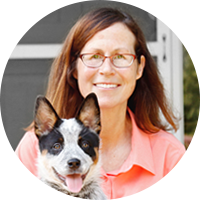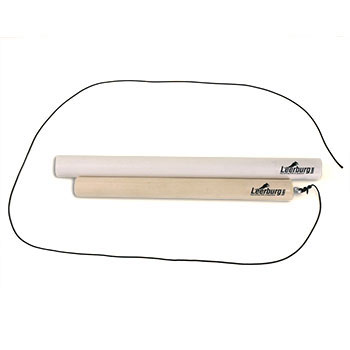July 15, 2014
I have a dominant, leash reactive dog. In training, does one provide strong correction (fair but firm) or go the engagement route?
Full Question:
Ed,Almost a year ago you provide some suggestions on me dealing with my leash reactive dog while on walks showing signs of whining/stress when seeing other dogs. I watched your "Dealing with Dominant & Aggressive Dogs" DVD, and could say that my dog is dominant and aggressive to some degree. Yet very trainable, and good at obedient skills.
In your DVD, you have a session in which you provided strong corrections to a dog you are walking near a fence with other dogs (high distraction). This is where I (and maybe a lot of your customers) see a difference in what to do.
Does one provide strong correction (fair but firm) or go the "engagement" route? I have struggled with these 2 concepts ever since I got my dog. He still, and I suppose always will have issues, it is just frustrating, as I seem to be making no progress with him and this leach reactive issue. But I will not give up. As your dominant dog DVD says at the end, its a life long process of training these types of dogs.
Thanks again for your comments

 Ed's Answer:
Ed's Answer:
Good questions. Probably things I should add to the DVD or the online course I am working on.
First the trainer needs to understand what engagement is, how to train it and how to ask for it on command. All this is done in distraction free environments.
We have a 2 week course on ENGAGEMENT. It has 50 or 60 short videos. Handlers who take the course know how to work with it.
Then once that’s done the handler needs to gradually increase the dog to levels of distractions and asked for engagement. Handlers need to find the level where the dog will not offer focus and detraction.
At that point every handler needs to figure out what to do. They need to accept the behavior and then manage the environment they take their dog in (I.E. don’t take them into those environments) or they need to decide of they can't do that and then need to correct the dog to the point where they get a behavior change.
How hard they correct depends on when the dog offers a behavior change. Some dogs simply need a voice correction, other dogs need a leash correction, and really hard headed dogs need serious leash corrections or even high level remote collar corrections. No one (not me, not anyone who is not there) can tell you what level your dog needs. Only you can figure this out.
But in the mean time, take the 2 week course and STUDY THE WORK.
Regards,
Ed Frawley
First the trainer needs to understand what engagement is, how to train it and how to ask for it on command. All this is done in distraction free environments.
We have a 2 week course on ENGAGEMENT. It has 50 or 60 short videos. Handlers who take the course know how to work with it.
Then once that’s done the handler needs to gradually increase the dog to levels of distractions and asked for engagement. Handlers need to find the level where the dog will not offer focus and detraction.
At that point every handler needs to figure out what to do. They need to accept the behavior and then manage the environment they take their dog in (I.E. don’t take them into those environments) or they need to decide of they can't do that and then need to correct the dog to the point where they get a behavior change.
How hard they correct depends on when the dog offers a behavior change. Some dogs simply need a voice correction, other dogs need a leash correction, and really hard headed dogs need serious leash corrections or even high level remote collar corrections. No one (not me, not anyone who is not there) can tell you what level your dog needs. Only you can figure this out.
But in the mean time, take the 2 week course and STUDY THE WORK.
Regards,
Ed Frawley
100% (11 out of 11)
respondents found this answer helpful


Can't find what you're looking for?







